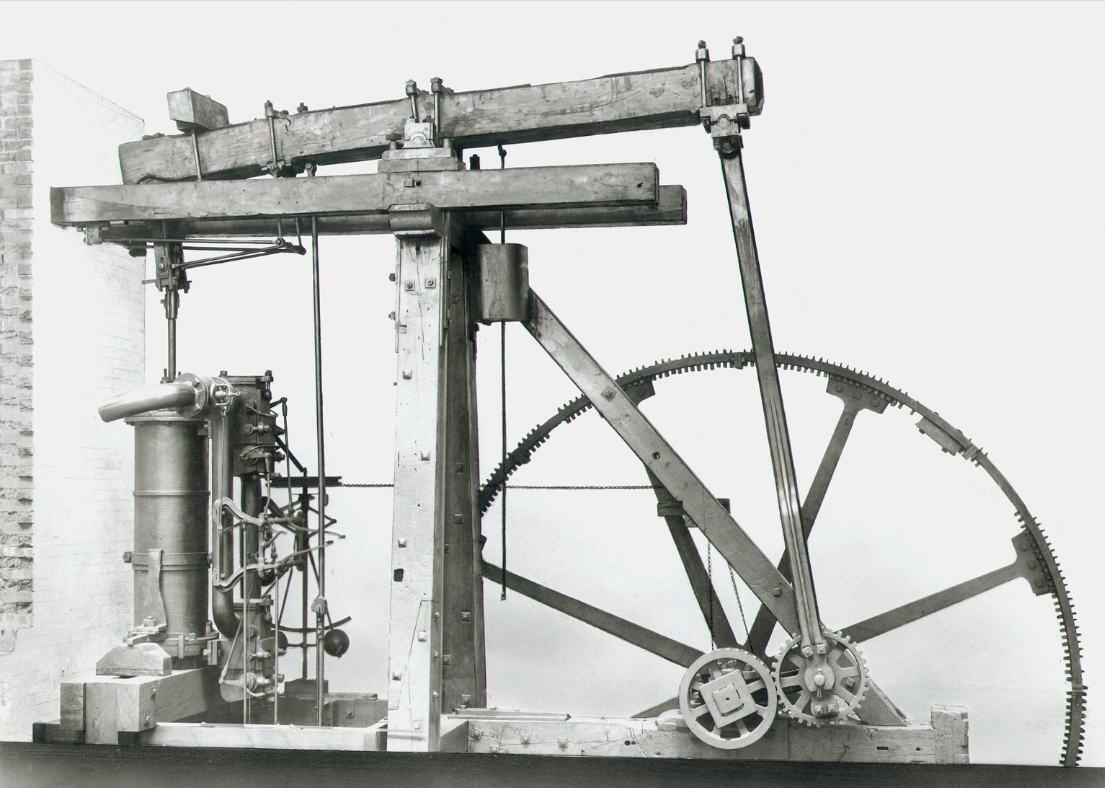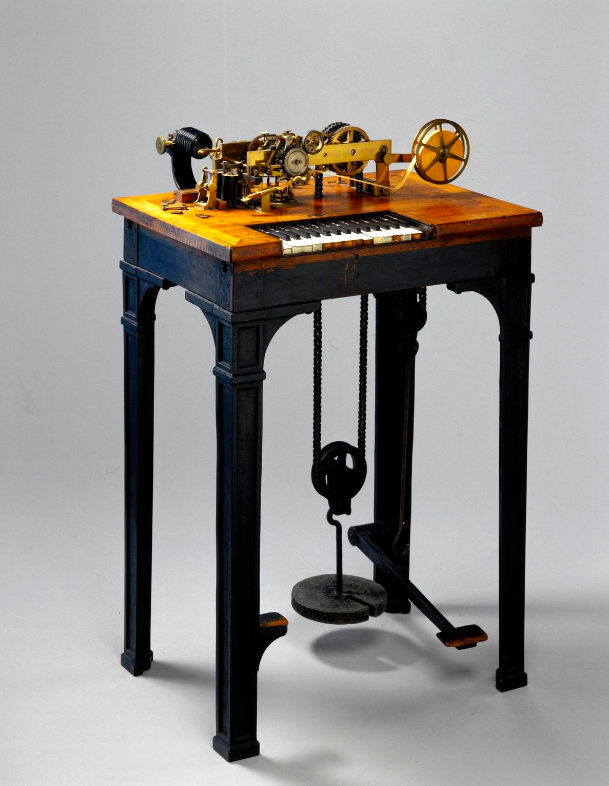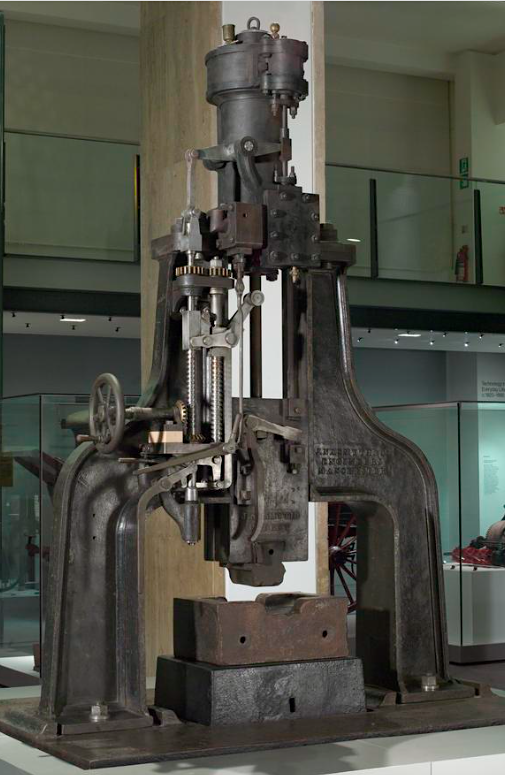Work and domestic life were revolutionized in Britain as a result of the Industrial Revolution.
The benefits of labour-saving machinery, inexpensive and comfortable transportation, more affordable consumer products, improved lighting and heating, and quicker means of communication came with a price: increased noise, pollution, social upheaval, and repetitious work.
The following innovations were selected not only for what they could achieve but also for how they made possible additional inventions and how they changed the professional and daily lives of millions of people.
The time frame is also significant, and in this case, it is considered to be 1750–1860. According to these standards, the following are the top 10 Industrial Revolution inventions:
Table of Contents
10. The Watt Steam Engine

The steam engine, which utilized the pressure created by boiling water to generate mechanical work, is frequently considered the single most significant innovation of the Industrial Revolution.
Because of the need to drain water from flooded mine shafts, the steam engine was developed. Thomas Savery (ca. 1650–1715) created the steam pump in 1698. To remove water from coal mines in Dudley, Midlands, Thomas Newcomen (1664–1729) developed a more powerful steam pump in 1712.
Coal mining increased as a result of the widespread use of steam-powered transportation. The steam engine needed improvements in fuel efficiency and output before it could be put to wider use.
Scottish instrument maker James Watt (1736-1819) and English engineer Matthew Boulton (1728-1809) worked tirelessly to improve the efficiency of the steam engine, and they finally did it in 1778 with the invention of a separate condenser.
The steam propelled the piston both up and down (hence the name double-acting engine), which increased the ‘horsepower’ (a word developed by Watt) of the engine.
A flywheel was used to transform the engine’s linear action into more flexible rotational motion. Watt’s engine was inexpensive enough to use practically anywhere since it used just a fourth as much gasoline as Newcomen’s. Improvements in machining and manufacturing allowed for the production of steam engines with stronger and better-fitting components, such as the expansion steam engine.
Over 2,500 steam engines were in operation in British mines, cotton mills, and industries by the year 1800. The Birmingham factory of Watt and Boulton produced 500 of these engines. People from many walks of life were impacted. Now, steam can power anything from water features to threshing machines to sewage pumps to printing presses.
Steam-powered devices might greatly improve the efficiency of any task requiring pushing, pulling, lifting, or pressing. Coal mining, the original use for steam engines, saw a boom as a result of its widespread adoption for other purposes, such as powering trains and ships.
9. Power Loom
During the British Industrial Revolution, machines revolutionized the textile industry. Weaving machinery was developed by Edmund Cartwright (1743–1823) and first used in 1785.
The machine increased the rate at which fabric could be produced, eliminating the need for highly trained handweavers. The completely automated system required just one person to switch out whole spindles.
In the enterprises that Richard Arkwright (1732–1792) controlled, the power loom was first put to good use. In 1809, the British government gave Cartwright £10,000 in recognition of the power loom’s transformative impact on British manufacturing.
Richard Roberts (1789–1864), another innovator, produced a more dependable iron version of Cartwright’s loom in 1822. The worldwide textile industry was not sluggish enough to install several power looms. By 1835, Britain had 50,000 power looms in operation, allowing manufacturers to produce textiles at lower costs than anywhere else.
Cotton accounted for 2.3% of Britain’s total imports in 1790, but by 1830, it had skyrocketed to 55%.
The proliferation of the power loom necessitated the development of more efficient spinning machines to keep up with the looms’ insatiable need for yarn. Operators of modern textile machines need only be concerned with keeping the machines working, frequently around the clock. As more manufacturers opened, additional employment became available.
The price of textiles dropped, making them more accessible to consumers, while companies that supplied them, such as cotton plantations and coal mines, flourished.
The abuses of workers in the manufacturing system by unscrupulous bosses also had the secondary consequence of giving rise to the trade union movement, which sought to defend workers’ rights and health.
8. Cotton Refining Mill

With the ability to completely mechanize spinning and weaving, both the pace and volume of textile manufacturing improved dramatically. Next, enough cotton in particular had to be produced to feed the insatiable appetites of the machines. On sizable plantations in the southern United States, cotton was hand-picked, sorted, and cleaned. Typically, slave labor was used for this process.
While living on a cotton farm in Georgia, Massachusetts native Eli Whitney (1765–1825) developed a method to increase output. Whitney’s Cotton Gin (‘gin’ meaning ‘machine’ or ‘engine’) was created in 1794, and it revolutionized the laborious process of removing the sticky seeds from cotton balls.
The cotton gin was originally driven by horses or water wheels but was later adapted to use steam power. Through a series of rotating metal teeth and hooks, the machine separated raw cotton from the problematic seeds as it was dragged through a comb mesh. Daily throughput for a single cotton gin might reach up to 25 kilograms (55 pounds) of cotton.
Slavery on cotton plantations increased as more and more cotton was produced to feed the ravenous gins. The equipment was so effective that it was quickly pirated by other plantation owners. By 1860, there were over 4 million slaves in the United States.
The United States was responsible for producing 75% of the world’s cotton, which was then shipped all over the globe. Cotton accounted for 2.3% of Britain’s total imports in 1790, but by 1830, it had skyrocketed to 55%. In 1830, cotton textiles accounted for half of Britain’s overall exports due to the success of the country’s textile mills in processing the raw material. According to R. According to C. Allen, “Cotton was the wonder industry of the Industrial Revolution” (182).
7. Natural Gas Street Lamps

Gas lighting replaced the dingy illumination of the nights given by burning oil or tallow candles. William Murdock (1754–1839), a Scotsman, found about 1792 or 1793 that coal dust released a flammable gas. Murdock successfully used gas lighting in his Birmingham foundry.
Frederick Albert Winsor (1763–1830), a German inventor, was the first to propose using coal gas for public illumination in 1807. By installing gas lighting in London, from Pall Mall to St. James’s Park, Winsor magnificently showed off the possibilities of his proposal.
As a result of the demonstration’s success, 13 gas-lit lampposts were installed along Pall Mall, making it the first street in the world to have such lighting. London had around 40,000 gas lights by the year 1820.
People’s routines changed when lights were installed in previously gloomy areas. As going out at night became less intimidating, more and more people started frequenting restaurants and nightclubs.
Rapid global adoption followed in 1816, when Baltimore, Maryland, became the first city in the United States to light its streets with coal gas. Paris got its first citywide gas lighting system in 1820.
6. Electromagnet
Inspired by the research of French scientist André-Marie Ampère (1775–1836) and Danish physicist Hans Christian Rsted (1777–1851), Canadian engineer William Sturgeon (1783–1850) built the first electromagnet in 1825.
The gadget consisted of a horseshoe-shaped piece of iron housed in a coil of wire that could be used to apply or remove a magnetic field. When Sturgeon developed the commutator, his electromagnet became a considerably more flexible power source, capable of lifting an item and also driving a motor.
From the telegraph (see below) to modern washing machines, this energy source has been everywhere.
5. The First Photograph

In 1826, Frenchman Joseph Nicéphore Niépce (1765–1833) used a camera obscura to capture the first ever picture. Although somewhat blurry, the snapshot labelled View from the Window at Le Gras is the first known photograph of an actual scene. Artists and engravers have been making use of camera obscuras, which are simply boxes with tiny apertures covered by lenses, for quite some time. Nièpce’s innovation was to use light-sensitive silver chloride-coated paper to permanently record the picture formed by the lens. Heliography was the name of the new method, but it had two major flaws.
The first issue was that the picture turned dark as soon as it was exposed to light. The second issue was that the picture was taken in negative, making bright regions dark and dark areas light. Niépce overcame this difficulty by coating a glass or pewter plate with a bitumen solution and photographing the scene outside his window.
Louis-Jacques Daguerre (1789–1851) refined the concept of the picture by using silver-coated copper plates to create a positive image. A flurry of new photography studios opened when the French government acquired and publicized daguerreotypes.
The first paper negatives from which an unlimited number of prints could be manufactured were created by English inventor William Henry Fox Talbot (1800–1877) in 1840.
The introduction of the camera not only made it possible for individuals of all socioeconomic backgrounds to have their photographs shot, but it also completely transformed the art world.
Since the camera could so perfectly record their surroundings, many painters lost interest in doing so. Instead, they tried to convey an emotional state through their work by immortalizing fleeting Color and light phenomena. One reason impressionism and symbolism flourished in the last quarter of the 19th century was the advent of the camera.
4. Rocket

Mines constructed the first rails, which were just a few hundred feet long and used to move ore to the harbor for export. The Newcastle firm owned by George Stephenson (1781–1848) specialized in the construction of coal-transporting railroad cars.
Stephenson anticipated that people would want to ride the rails in the same manner as coal did, so he built the Locomotion 1 with enough power to tow carriages. In 1825, the first passengers rode on the Locomotion 1 from Stockton to Darlington on a steam railway in the northeast of England.
Robert Stephenson (1803–1859), George’s son, created the first successful steam-powered locomotive, the Rocket, in 1829. That year, the locomotive triumphed in the Rainhill Trials, a competition to choose which engine would be used to move carriages over the world’s first intercity line, which ran from Liverpool to Manchester. The Rocket was the first locomotive to be both powerful and dependable, thanks to innovative features like its multitubular boiler and blast pipe. With a peak speed of (then) an incredible 48 km/h (30 mph), Rocket was a deserving winner of the £500 (about £42,000 or $50,000) award in the Rainhill Trials. Eventually, 1,200 people a day were riding the Liverpool-Manchester route. It paved the stage for a global revolution in transportation.
By 1870, “railway mania” had prompted the construction of 24,000 kilometers (15,000 miles) of rail lines throughout Britain. When railroads achieved speeds of 80 km/h (50 mph) in 1848, people could make the trip from London to Glasgow in 12 hours, when it would have taken five days or more by stagecoach. Coal production (for fuel) and iron and steel production (for rails, bridges, and trains) both increased significantly as a result of the development of railroads. People started traveling to other locations, most notably the beach. Numerous positions, from station managers to maintenance workers, were made available. The following day, delivery of letters was made possible across Britain, and with the millions of tons of freight transported, prices for everyday items dropped.
3. The Electrical Telegraph

The ability to transport sacks of letters by train not only made travel faster, but it also made mail delivery quicker. There was already a formidable competitor to postage when Britain created its universal penny post system in 1840, which made next-day delivery possible. Charles Wheatstone (1802–1875) and William Fothergill Cook (1806–1879) created the telegraph in 1837.
Only 20 letters were available on the original telegraph machines, with the message being sent by the tiny movement of two of the machine’s five needles in the direction of a certain letter.
Electrical impulses sent between devices via telegraph wire manipulated the needles. The railroad industry was the first to take advantage of the speed with which short messages could be sent in order to relay orders to drivers and stations.
In 1838, the Great Western Railway was the first to put the machine to good use, running trains from Paddington Station to West Drayton, a distance of about 21 kilometers (13 miles). The cables were originally buried, but they were later insulated so that they could be strung between telegraph poles in the open air.
The widespread adoption of the system throughout the British railway network made it feasible, for the first time, to have a standardized time across the country when local time had differed. As a result, Greenwich Mean Time (GMT) was established thanks to the telegraph. Since messages could be transmitted wherever there were telegraphs, information about recent occurrences was disseminated far more rapidly than in the past. Fast telegraph transmission also helped the police catch fleeing offenders and notify their colleagues far away of illegal activities.
In 1844, Samuel Morse (1791–1872) of Massachusetts, with the help of Alfred Vail, implemented his Morse code, which greatly improved telegraph communication. Faster intercontinental connection was made possible in 1866 when the first transatlantic telegraph wire was installed by the Brunel-designed steamship SS Great Eastern. Everything shrank in size, and time sped up all at once.
2. The Steam Hammer

Despite its unassuming appearance, the steam hammer was instrumental in the development of a wide variety of subsequent innovations. This rather basic apparatus, invented in 1839 by the Scotsman James Nesmith (1808–1899), made use of a steam engine to let fall (and subsequently push) a massive weight capable of forging or bending large amounts of metal sitting on an adjustable anvil plate with accuracy of both speed and direction.
Because a steam hammer could be fabricated in any needed size, it was feasible to shape metals in ways that were previously impossible. In addition, the hammer’s precision allowed for the uniform bending of several metal pieces, a feature particularly useful when working on components for massive equipment like steam locomotives, iron ships, hefty weaponry, and bridge girders.
Nesmith’s equipment was so accurate that he could show guests at his foundry that a 2.5-ton weight placed in a wine glass would smash the eggshell without breaking the glass.
This accuracy allowed the steam hammer to be used for more delicate jobs, such as minting coins and printing currency. The hammer’s speed also came in handy; it could occasionally deal out as many as 220 strokes per minute.
No matter the task at hand, all that was required in the way of manual labor was a single person flipping a lever around with a casual air. Nesmith, unlike many of the other inventors on this list, became very wealthy as a result of his invention of the hammer, which dramatically altered the nature of industrial manufacturing.
1. The Making of Steel

Steel is stronger, more malleable, and lighter than iron, which was extensively utilized throughout the Industrial Revolution for a wide variety of equipment and building projects.
Because of this, steel was ideal for heavy-duty applications like constructing bridges and creating train lines. The issue was that it was very costly to manufacture steel.
Like many other innovations of the Industrial Revolution, this one was built on the shoulders of giants for the sake of efficiency and economy.
Top 10 Lists of the people, things, places, most expensive, animals, most popular, luxury and high rankings of world. World's Top Insider focuses on the top ten lists of best, greatest and top rankings in the world.


